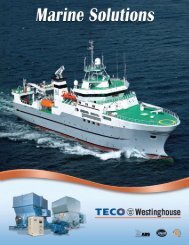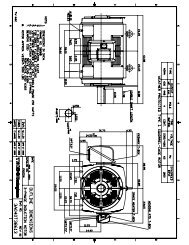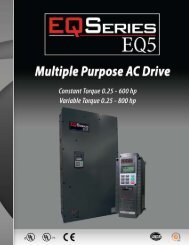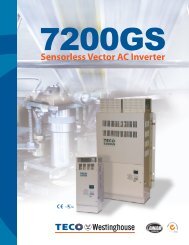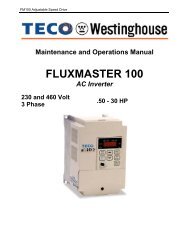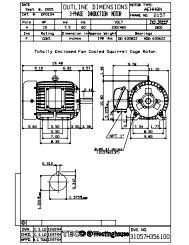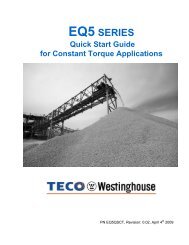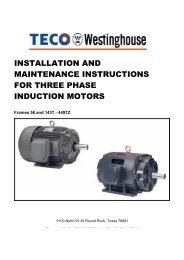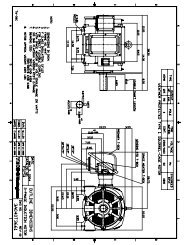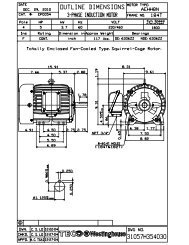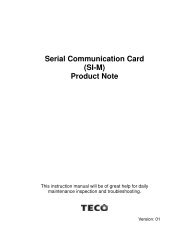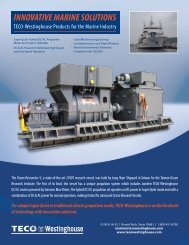EQ7 Series Instruction Manual - TECO-Westinghouse Motor Company
EQ7 Series Instruction Manual - TECO-Westinghouse Motor Company
EQ7 Series Instruction Manual - TECO-Westinghouse Motor Company
Create successful ePaper yourself
Turn your PDF publications into a flip-book with our unique Google optimized e-Paper software.
It is also possible to use an external digital input signal as an "Enable DC braking" terminal command<br />
DCBRK. As long as the DCBRK command is ON, the inverter performs DC braking, regardless of the<br />
braking time specified by F22.<br />
( Refer to E01 through E07, data =13.)<br />
Turning the DCBRK command ON even when the inverter is in a stopped state activates the DC braking.<br />
This feature allows the motor to be excited before starting, resulting in smoother acceleration (quicker<br />
build-up of acceleration torque) (under V/f control).<br />
When vector control without/with speed sensor is selected, use the pre-exciting feature for establishing<br />
the magnetic flux. ( For details, refer to H84.)<br />
In general, DC braking is used to prevent the motor rotation by inertia during the stopping process. Under<br />
vector control with speed sensor, however, zero speed control will be more effective for applications<br />
where load is applied to the motor even in a stopped state.<br />
If the zero speed control continues for a long time, the motor may slightly rotate due to a control error. To<br />
eliminate any rotation, use the servo-lock function. ( For details, refer to J97.)<br />
In general, specify data of function code F20 at a value close to the rated slip frequency of motor. If<br />
setting is at an extremely high value, control may become unstable and an overvoltage alarm may result<br />
in some cases.<br />
Even if the motor is stopped by DC braking, voltage is output to inverter output terminals U, V, and W.<br />
An electric shock may occur.<br />
The DC brake function of the inverter does not provide any holding mechanism.<br />
Injuries could occur.<br />
F23 to F25<br />
Starting Frequency 1, Starting Frequency 1 (Holding time), Stop Frequency<br />
F38 (Stop Frequency (Detection mode)) F39 (Stop Frequency (Holding time))<br />
H92 (Continuity of Running (P)<br />
H93 (Continuity of Running (I)<br />
d24 (Zero Speed Control)<br />
Under V/f control<br />
At the startup of an inverter, the initial output frequency is equal to the starting frequency. The inverter shuts off its<br />
output when the output frequency reaches the stop frequency.<br />
Set the starting frequency to a level at which the motor can generate enough torque for startup. Generally, set the<br />
motor's rated slip frequency as the starting frequency.<br />
Specifying the holding time for the starting frequency compensates for the delay time for the establishment of a<br />
magnetic flux in the motor; specifying that for the stop frequency stabilizes the motor speed at the stop of the<br />
inverter.<br />
• Starting frequency 1 (F23)<br />
Data setting range: 0.0 to 60.0 (Hz)<br />
F23 specifies the starting frequency at the startup of an inverter. Under V/f control, even if the starting frequency is<br />
set at 0.0 Hz, the inverter starts at 0.1 Hz.<br />
4-51



